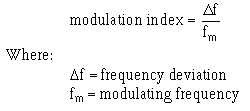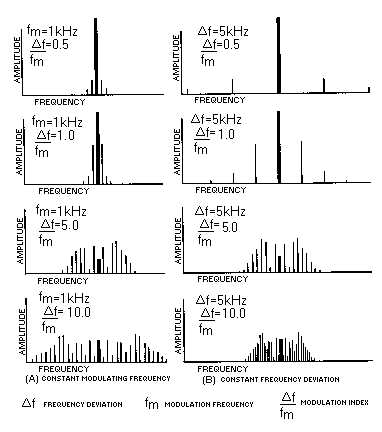2-13
MODULATION INDEX.—This ratio of frequency deviation to frequency of the modulating signal
is useful because it also describes the ratio of amplitude to tone for the audio signal. These factors
determine the number and spacing of the side frequencies of the transmitted signal. The modulation index
formula is shown below:
Views (A) and (B) of figure 2-9 show the frequency spectrum for various fm signals. In the four
examples of view (A), the modulating frequency is constant; the deviation frequency is changed to show
the effects of modulation indexes of 0.5, 1.0, 5.0, and 10.0. In view (B) the deviation frequency is held
constant and the modulating frequency is varied to give the same modulation indexes.
Figure 2-9.—Frequency spectra of fm waves under various conditions.
You can determine several facts about fm signals by studying the frequency spectrum. For example,
table 2-1 was developed from the information in figure 2-9. Notice in the top spectrums of both views (A)
and (B) that the modulation index is 0.5. Also notice as you look at the next lower spectrums that the
modulation index is 1.0. Next down is 5.0, and finally, the bottom spectrums have modulation indexes of



